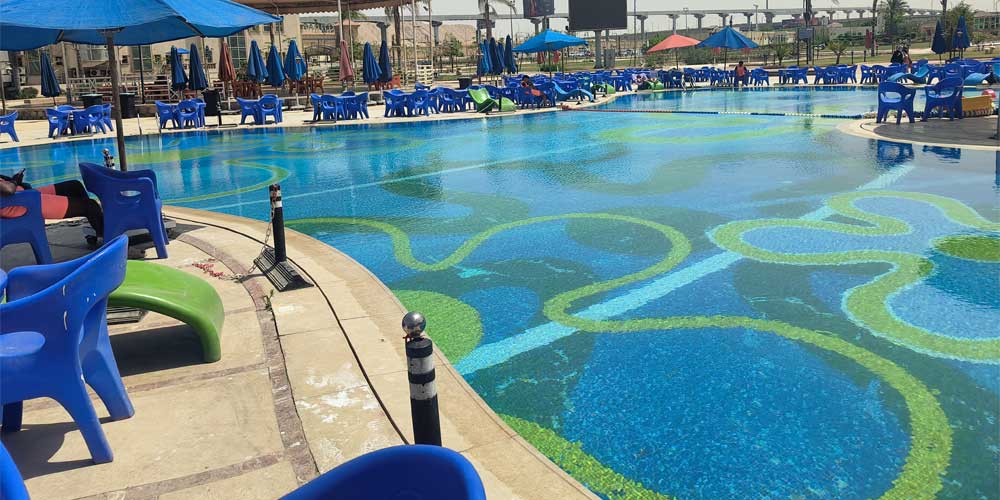Kloridi ya polyalumini(PAC) ni kiwanja cha kemikali ambacho hutumika sana katika mabwawa ya kuogelea kwa ajili ya kutibu maji. Ni coagulant isokaboni ya polima ambayo ina jukumu muhimu katika kudumisha ubora wa maji kwa kuondoa uchafu na uchafu. Katika makala haya, tutachunguza matumizi, faida, na mazingatio ya kutumia kloridi ya polyalumini katika mabwawa ya kuogelea.
Utangulizi wa Kloridi ya Polyaluminium (PAC):
Kloridi ya polyaluminium ni kigandishi chenye matumizi mengi kinachojulikana hasa kwa uwezo wake wa kufafanua maji kwa kuondoa chembe zilizosimamishwa, koloidi na viumbe hai. Ni chaguo linalopendekezwa kwa matibabu ya maji kwa sababu ya ufanisi wake wa juu, ufanisi wa gharama, na urahisi wa matumizi. PAC inapatikana katika aina mbalimbali, ikiwa ni pamoja na kioevu na imara, na viwango tofauti ili kukidhi mahitaji maalum.
Matumizi katika Mabwawa ya Kuogelea:
Ufafanuzi na Uchujaji:PAChutumika kuboresha uwazi wa maji kwa kujumlisha chembe ndogo na koloidi, na kuifanya iwe rahisi kuchuja. Utaratibu huu husaidia kudumisha mazingira safi na ya kuvutia ya bwawa.
Udhibiti wa Mwani: PAC inasaidia katika kudhibiti ukuaji wa mwani kwa kuondoa mwani uliokufa au uliozimwa kutoka kwa maji ya bwawa. Hii itaboresha athari ya algaecidal ya klorini na algaecide.
Uondoaji wa Bakteria na Pathojeni: Kwa kukuza mgando na mchanga, hurahisisha uondoaji wa vimelea hivi vilivyounganishwa na yabisi iliyosimamishwa, na hivyo kuhakikisha mazingira salama na ya usafi ya kuogelea.
Faida za kutumia kloridi ya polyaluminium:
Ufanisi: PAC inatoa ufanisi wa juu wa kugandisha, kumaanisha kuwa inaweza kukusanya kwa haraka chembe zilizosimamishwa na vichafuzi, na hivyo kusababisha ufafanuzi wa haraka wa maji.
Ufanisi wa Gharama: Ikilinganishwa na vigandishi vingine, PAC ni ya kiuchumi kiasi, na kuifanya kuwa chaguo la kuvutia kwa waendeshaji wa mabwawa ya kuogelea wanaotaka kudhibiti gharama za matibabu ya maji kwa ufanisi.
Athari ndogo kwenye pH: Ikilinganishwa na salfati ya alumini, PAC hupunguza pH kidogo tu na jumla ya alkali. Hii inapunguza idadi ya pH na marekebisho ya jumla ya alkali na inapunguza kazi ya matengenezo.
Utangamano: PAC inaoana na michakato mbalimbali ya kutibu maji na inaweza kutumika pamoja na kemikali nyinginezo kama vile klorini na flocculants ili kuongeza ubora wa maji kwa ujumla.
Usalama: Inapotumiwa kulingana na miongozo inayopendekezwa, PAC inachukuliwa kuwa salama kwa maombi ya bwawa la kuogelea. Haileti hatari kubwa za kiafya kwa waogeleaji na imeidhinishwa kutumiwa na mamlaka ya udhibiti.
Mazingatio na Miongozo ya Kloridi ya Polyalumini:
Kipimo: Kipimo sahihi cha PAC ni muhimu ili kufikia matokeo bora ya matibabu ya maji. Ni muhimu kufuata mapendekezo ya mtengenezaji na kufanya upimaji wa maji mara kwa mara ili kubaini kipimo kinachofaa kulingana na ukubwa wa bwawa na ubora wa maji. Kumbuka: Wakati uchafu wa maji ni mkubwa, kipimo cha PAC kinapaswa pia kuongezwa ipasavyo.
Mbinu ya Utumaji: Inapendekezwa kufuta PAC katika suluhisho kabla ya kuiongeza. Njia hii inapaswa kuhakikisha usambazaji sawa wa PAC katika bwawa ili kuongeza ufanisi.
Uhifadhi na Utunzaji: PAC inapaswa kuhifadhiwa mahali pa baridi, kavu mbali na jua moja kwa moja na unyevu. Mbinu sahihi za utunzaji, ikiwa ni pamoja na kuvaa vifaa vya kinga kama vile glavu na miwani, zinapaswa kufuatwa.
Kwa kumalizia, kloridi ya polyalumini ni zana muhimu ya kudumisha ubora wa maji katika mabwawa ya kuogelea, ikitoa uondoaji mzuri wa uchafu, udhibiti wa mwani, na disinfection ya pathojeni. Kwa kuelewa matumizi yake, manufaa na mambo yanayozingatiwa, waendeshaji wa bwawa wanaweza kujumuisha PAC katika mbinu zao za kutibu maji ili kuhakikisha matumizi salama na ya kufurahisha ya kuogelea kwa wote.
Muda wa kutuma: Apr-28-2024


